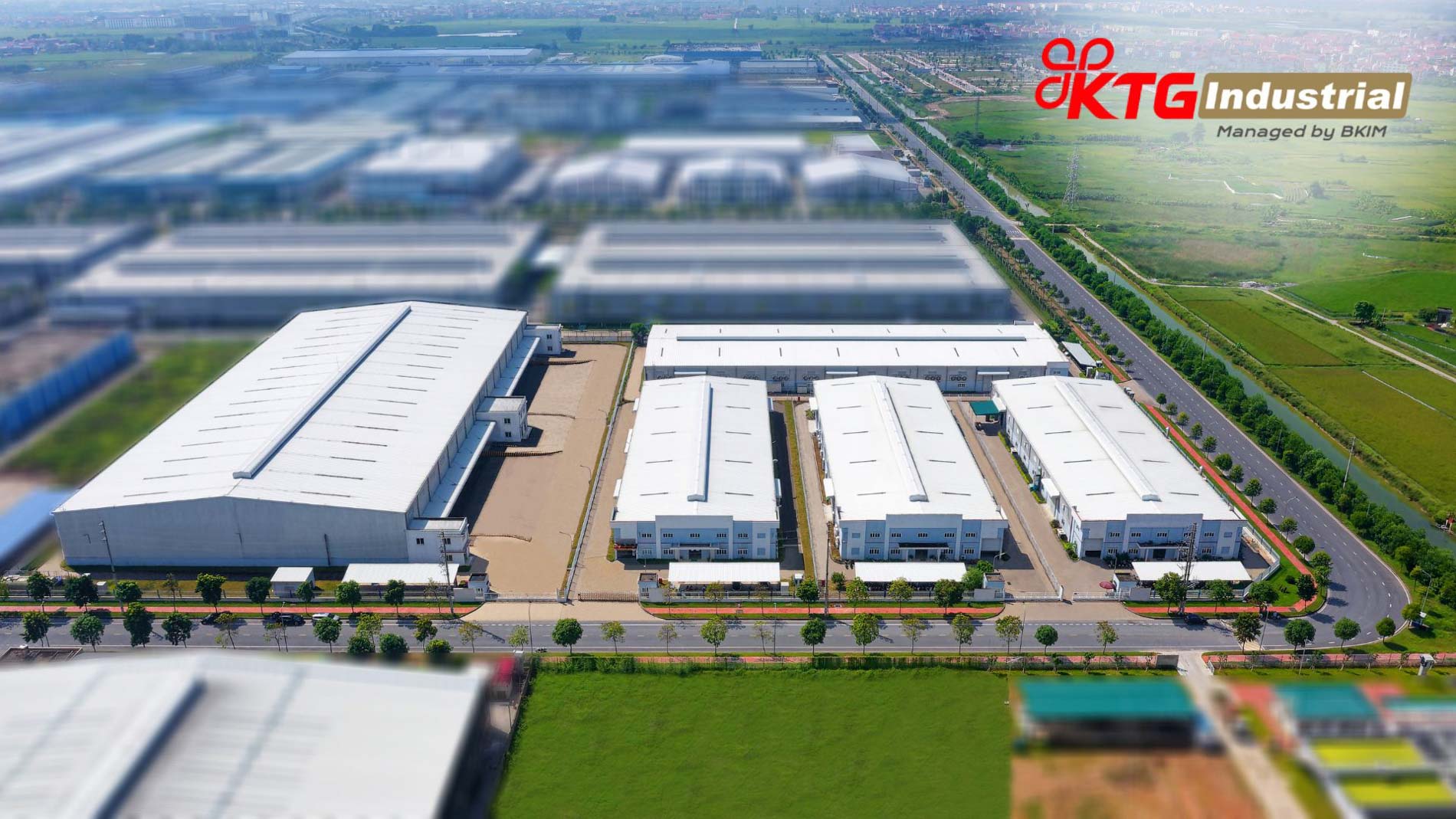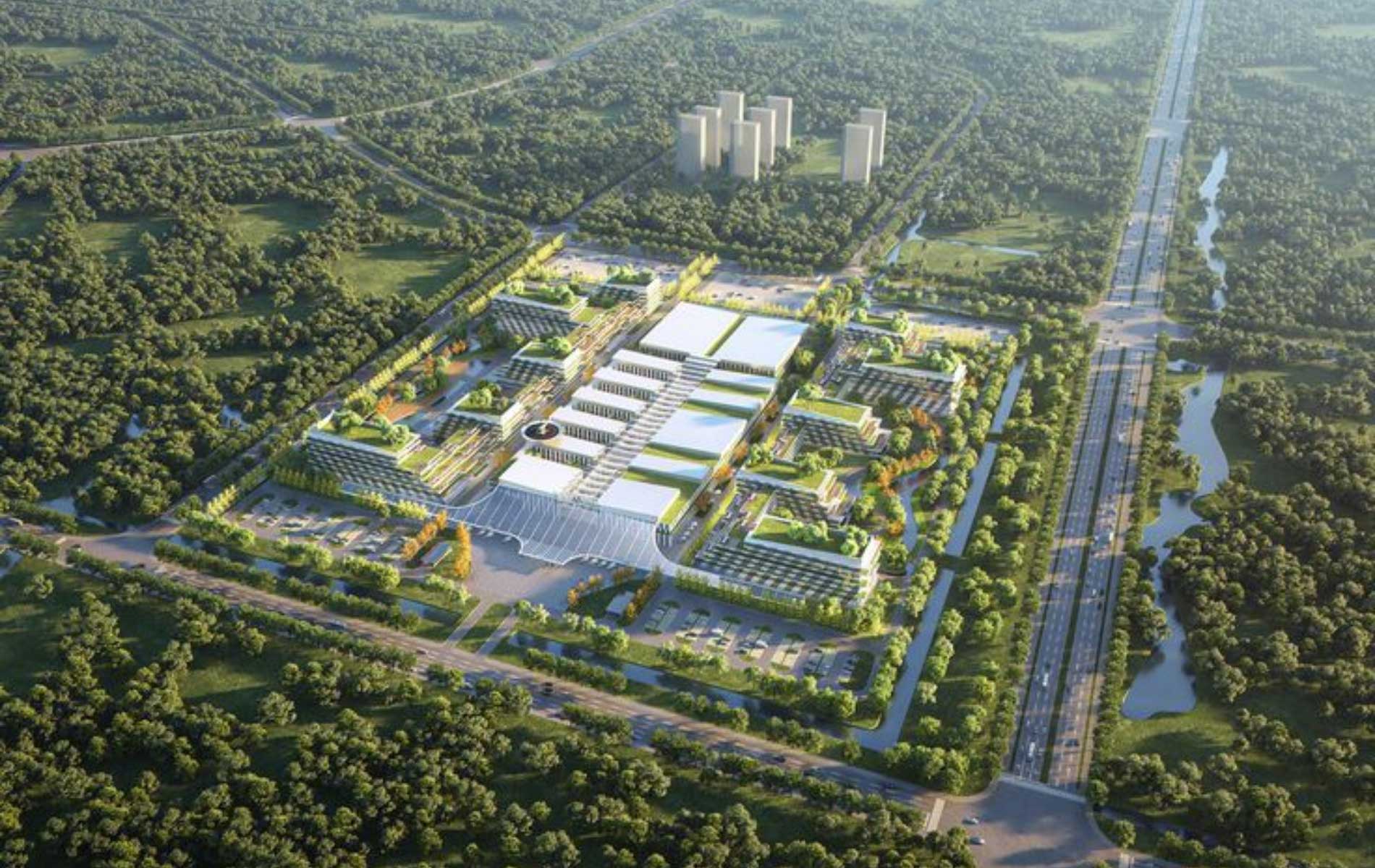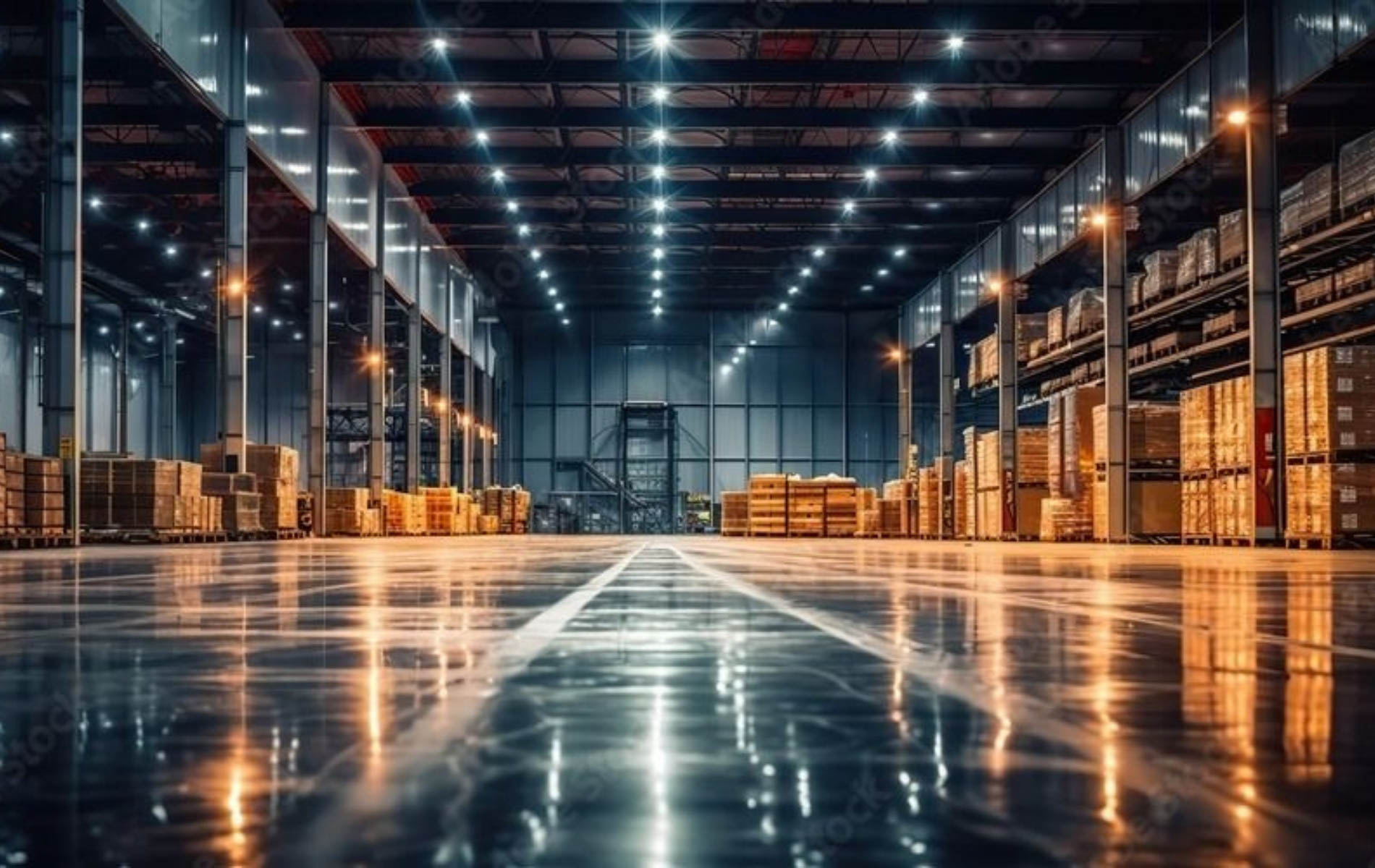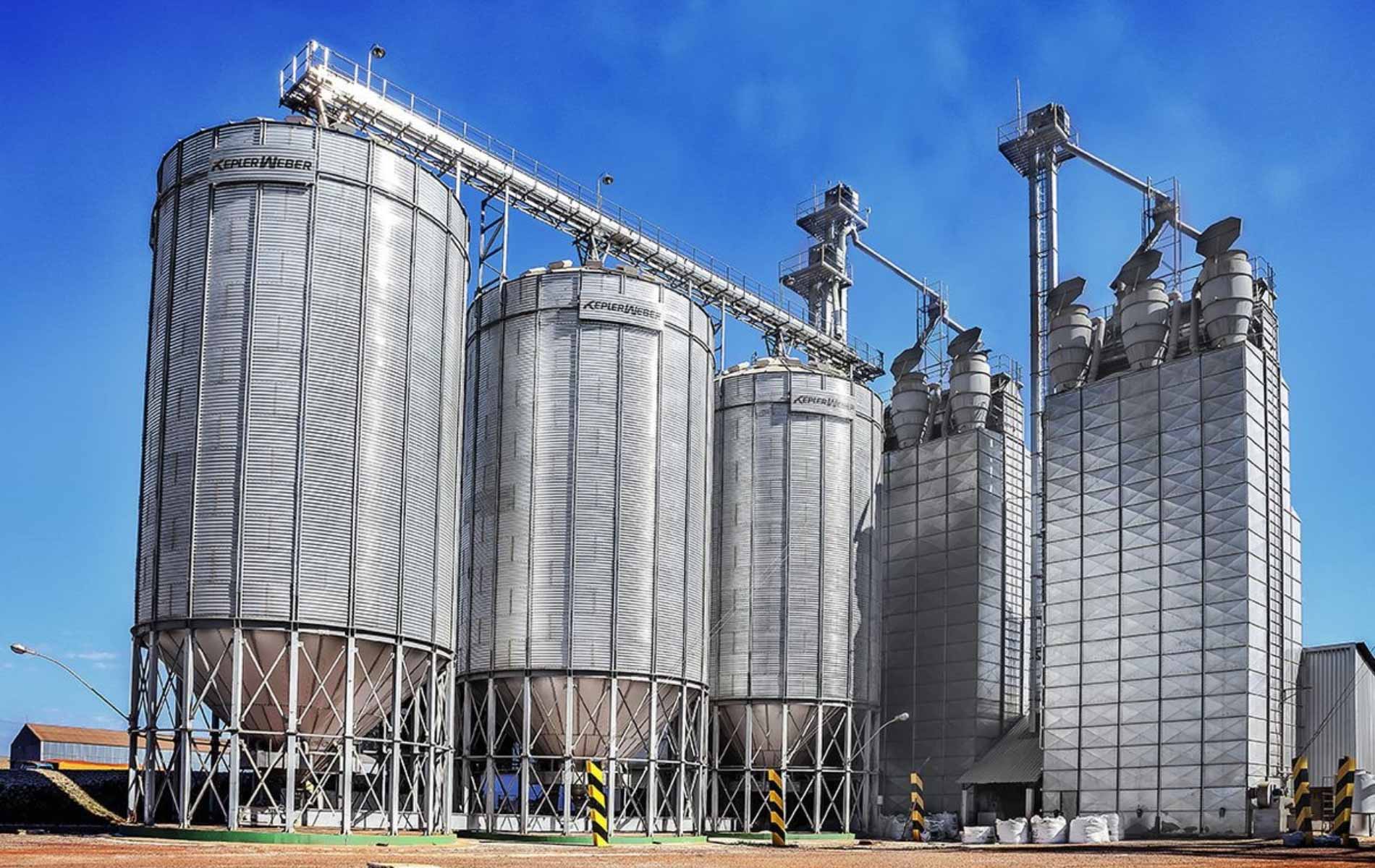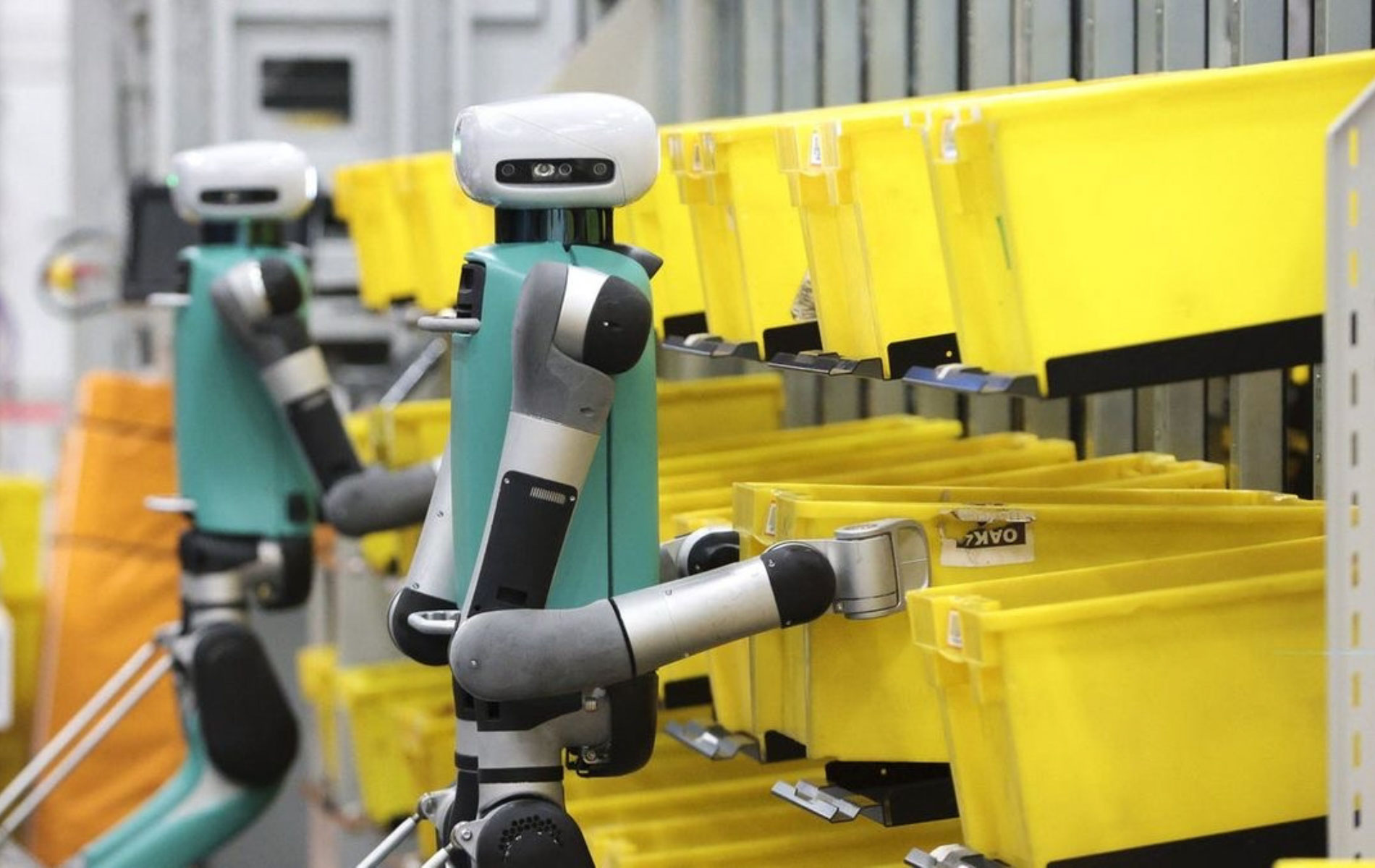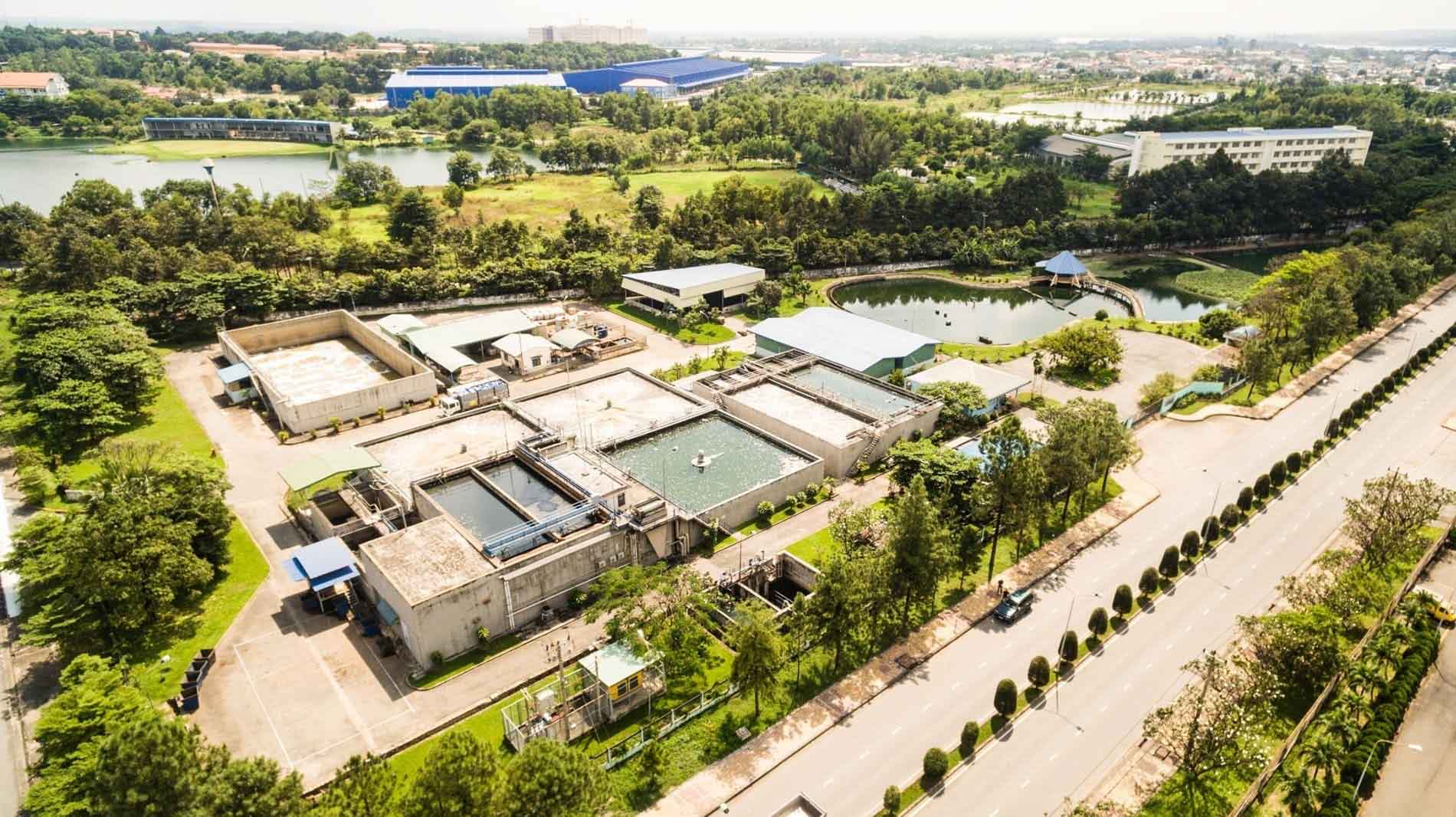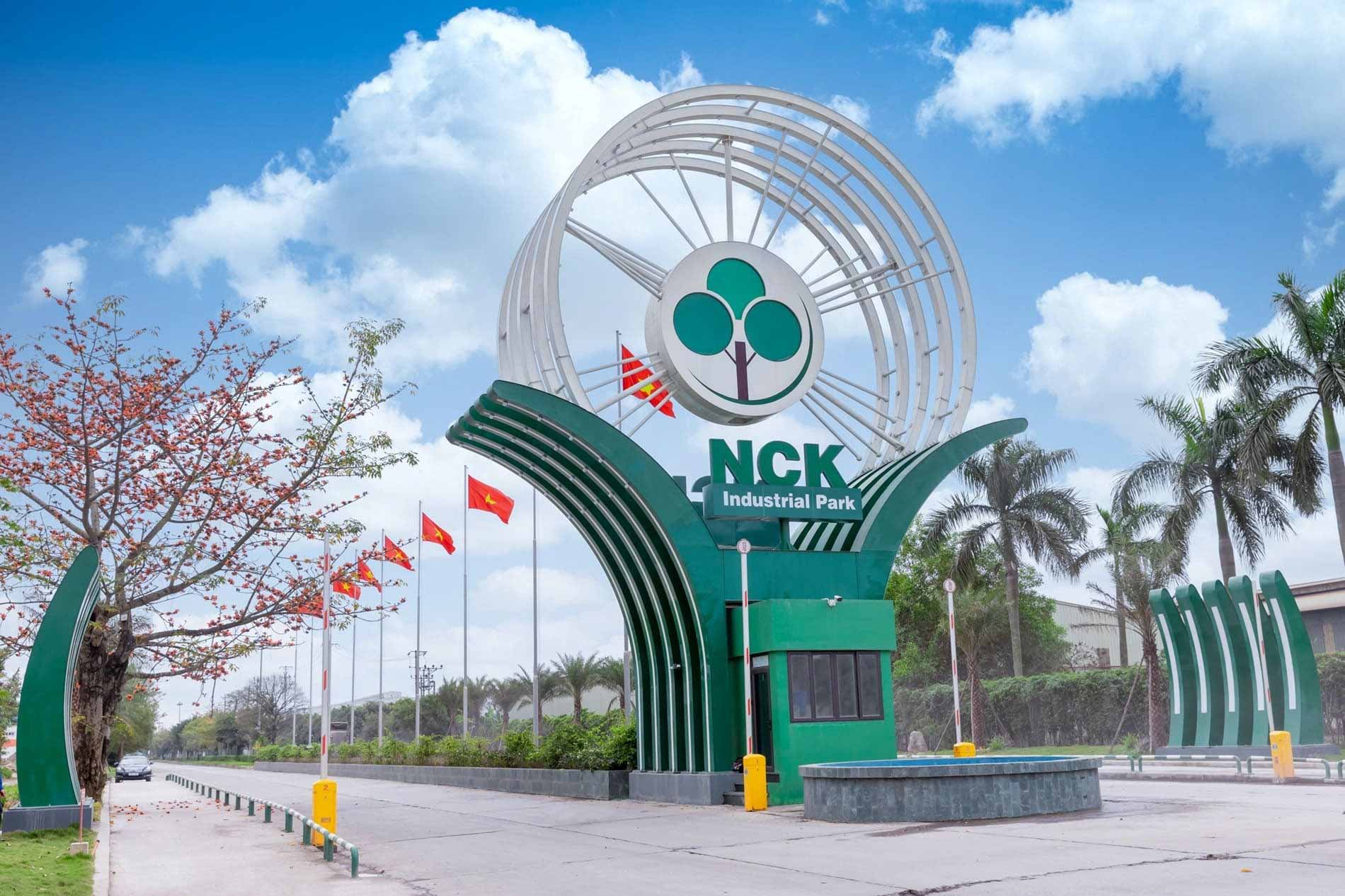Efficient operation of an industrial park requires a modern, integrated infrastructure system. This article, compiled by KTG Industrial, outlines key infrastructure categories in Vietnam such as: water supply and drainage systems, wastewater and solid waste treatment, internal transportation, power supply, lighting, and telecommunications – all crucial foundations ensuring continuous, safe, and efficient production and business operations.
What is Industrial Factory Infrastructure?
Industrial factory infrastructure can be understood as the system of fundamental constructions and technical components planned and invested in within an industrial park.
Its primary purpose is to serve the production and business activities of enterprises operating within that area. In other words, industrial factory infrastructure creates a synchronous, convenient, and efficient operating environment for factories and enterprises.
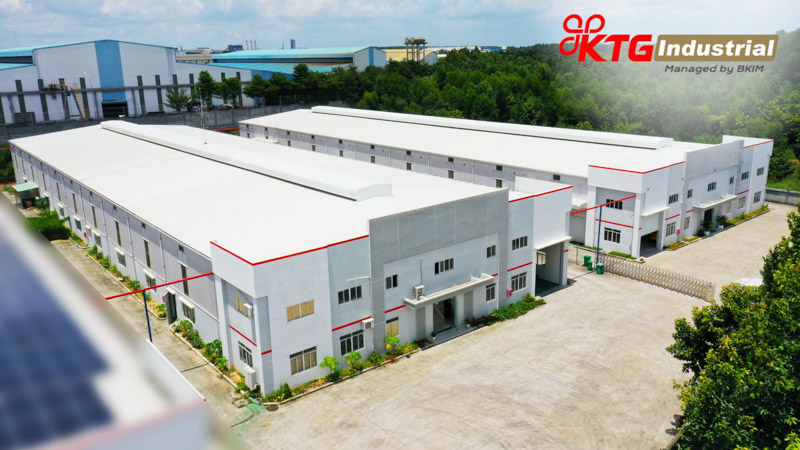
Industrial factory infrastructure is a system of basic technical facilities serving production and business in an industrial park.
Industrial Factory Infrastructure Facilities
Water Supply and Drainage Systems in Industrial Factory Parks
The water supply system is responsible for providing clean, treated water that meets the diverse usage needs of factories and enterprises within the industrial park.
The raw water source must be carefully selected and undergo a stringent treatment process to meet quality standards, serving both production activities and the daily needs of workers, ensuring hygiene and safety.
Conversely, the drainage system is tasked with collecting all wastewater generated from production and daily activities within the industrial park.
After collection, the wastewater is directed to a centralized treatment system, ensuring pollutants are removed before discharge into the external environment. This process must comply with environmental laws and health safety regulations.
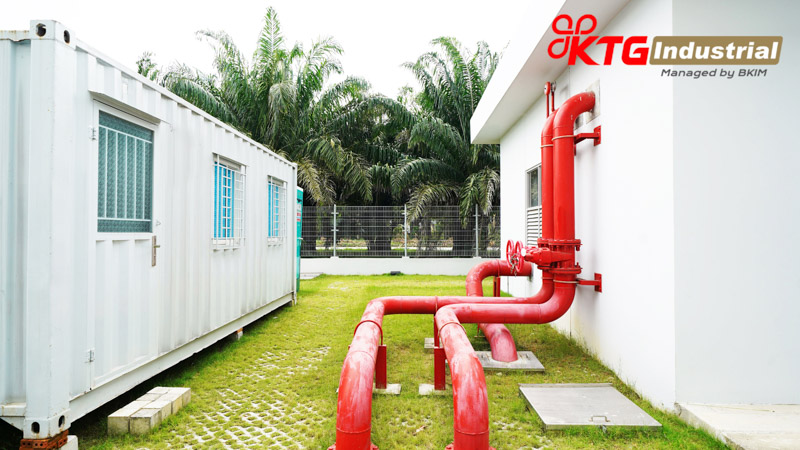
Provides clean water and treats wastewater to meet environmental standards.
Wastewater Treatment System in Industrial Factory Parks
This system plays a pivotal role in environmental protection and ensuring the sustainable operation of industrial factory infrastructure. Its main function is to collect all wastewater generated from the production and daily activities of factories within the industrial park.
Then, through modern treatment technologies, the system removes pollutants and toxic substances from the wastewater, ensuring that the outflowing water meets regulated environmental standards before being discharged.
Investing in and effectively operating a wastewater treatment system is not only a mandatory legal requirement but also demonstrates a business’s responsibility towards the community and the surrounding environment, contributing to building a positive reputation and image.
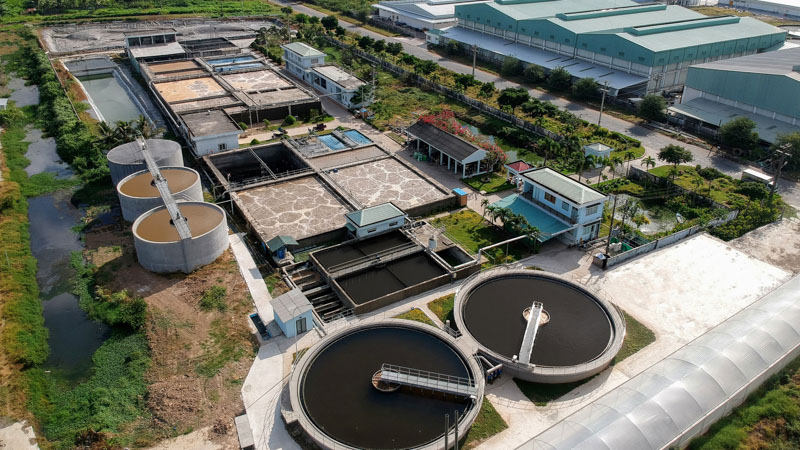
Collects and treats wastewater to meet discharge standards
Solid Waste Treatment System in Industrial Factory Parks
The solid waste treatment system within industrial factory infrastructure is built to collect, sort, and process various types of waste generated from production activities, including scraps and by-products.
An effective solid waste treatment system not only helps protect the environment but also contributes to creating a green and sustainable industrial park.
Given the long decomposition time of solid waste, its scientific and efficient treatment is crucial to minimizing negative environmental impacts. Treatment methods can include sanitary landfilling, controlled incineration, application of biotechnologies, or other advanced technological solutions.
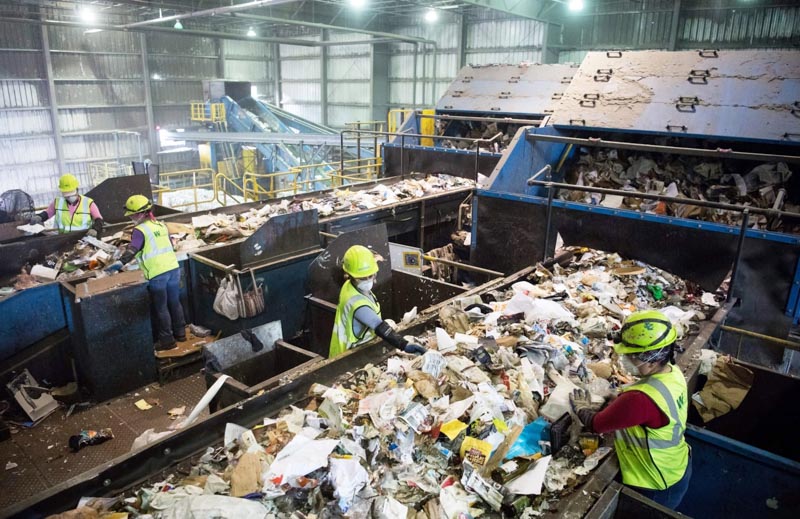
The industrial solid waste treatment system collects, sorts, and effectively processes production waste, contributing to a greener environment.
Internal Transportation Infrastructure in Industrial Factory Parks
Road Network
This refers to the system of roads designed and built within the industrial park, connecting factories, enterprises, production areas, and other utility structures.
The road network needs to be strategically planned, divided into main arteries and branch roads, accommodating various traffic loads and densities. This facilitates safe and swift movement for both vehicles and pedestrians.
Typically, the central main roads have a wide right-of-way of about 45m, providing space for multiple lanes and other technical infrastructure. Other internal roads have a right-of-way ranging from 25m to 35m, depending on their function and traffic density within specific areas.
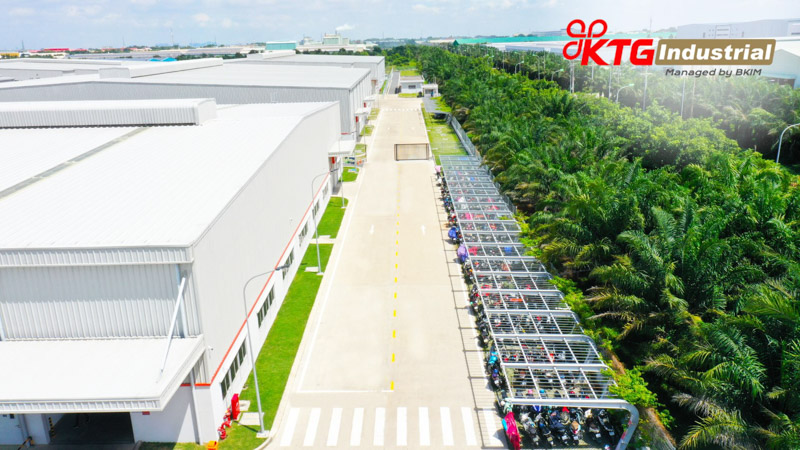
The internal road network of an industrial park is scientifically planned to ensure convenient and safe transportation.
Signage System
The internal traffic signage system is an integral part, functioning to guide, warn, and regulate traffic within the industrial park.
Signs must be placed in easily observable locations, adhering to standards for size and color. This includes directional signs, warning signs, prohibitive signs, and mandatory instruction signs, all of which help road users understand information and navigate safely.
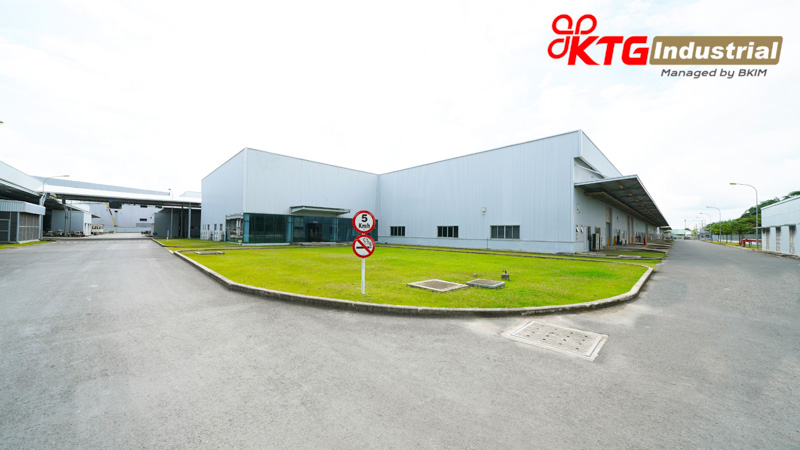
The internal traffic signage system guides, warns, and regulates traffic within the industrial park, ensuring safety for all participants.
Sidewalk System
Sidewalks are dedicated spaces for pedestrians along internal roads. Within industrial factory infrastructure, constructing a spacious, level, and safe sidewalk system is crucial.
This ensures the safety and convenience of workers, staff, and visitors moving between workplaces and public amenities within the area.
Power Supply System and Lighting System
Within industrial factory infrastructure, the power supply and lighting systems are inseparable, acting as the lifeblood to ensure continuous and safe operations.
Modern industrial factory infrastructure demands a stable electrical system to meet the significant energy requirements for production activities, machinery operation, and daily living.
Moreover, a scientifically designed lighting system provides ample illumination for internal traffic routes, production areas, warehouses, and other public facilities within the industrial park.
Sufficient lighting not only creates optimal working conditions for employees but also ensures security, order, and traffic safety at night, contributing to the overall operational efficiency of the entire industrial park.
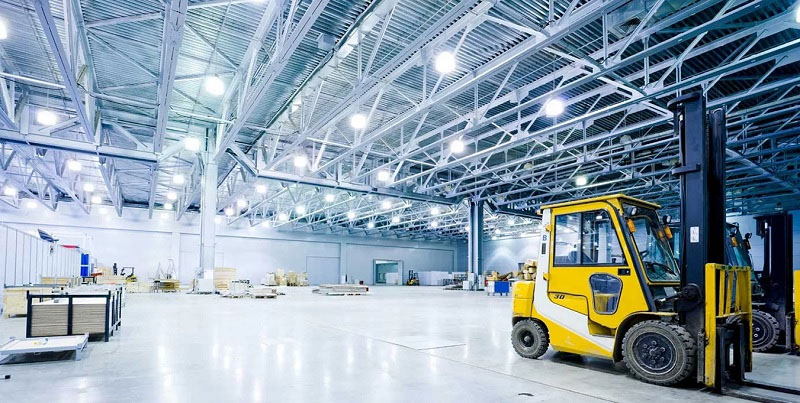
A stable power supply and adequate lighting are key elements in industrial park infrastructure, ensuring continuous, safe, and efficient production operations.
Telecommunications System
The telecommunications system ensures seamless connectivity across the industrial park. This is a crucial component of industrial factory infrastructure, encompassing elements such as high-speed internet, a stable telecommunications network, security camera surveillance systems, public address and warning systems, and even internal television systems.
The primary objective of establishing a robust telecommunications system is to ensure fast, accurate, and efficient information transmission between management, production departments, and all personnel within the industrial park.
This allows for timely communication of announcements, directives, and warning signals, thereby enhancing management and operational efficiency and ensuring safety for the entire area.
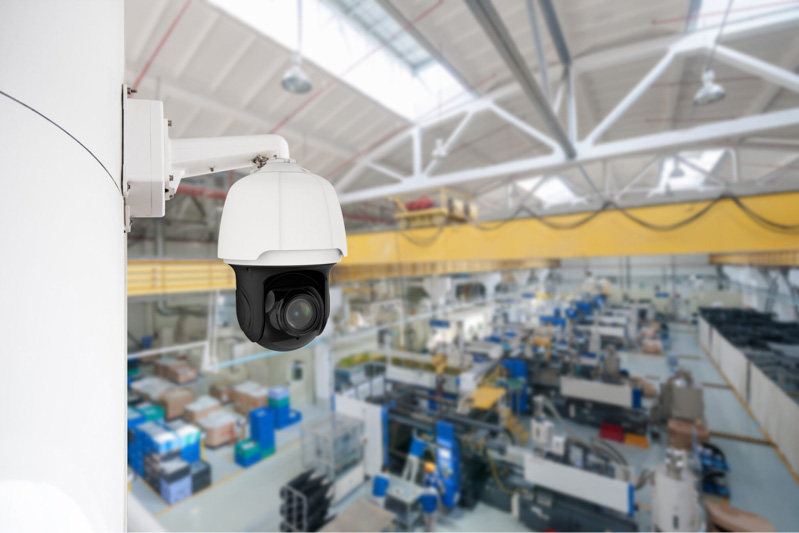
Transmits information efficiently to support management and safety.
Other Facilities
In addition to the core industrial factory infrastructure components already discussed, some industrial factory facilities are also equipped with supplementary utilities and support systems, depending on the scale and specific needs of each business.
For example, a security system with surveillance cameras and access control can be installed to enhance security and workforce management.
Furthermore, spacious and well-planned parking areas are also a crucial factor, ensuring convenience for both staff and customers. While not mandatory, these amenities contribute to creating a more professional, safe, and comfortable working environment within the industrial park.
Conclusion
Through this detailed overview of industrial park infrastructure in Vietnam, we hope to have provided readers with a comprehensive understanding of the technical infrastructure system, and contributed to a clearer insight into the current industrial real estate sector.
This also serves as an important basis for investors to assess potential and make informed decisions when selecting a production and business location in Vietnam.

